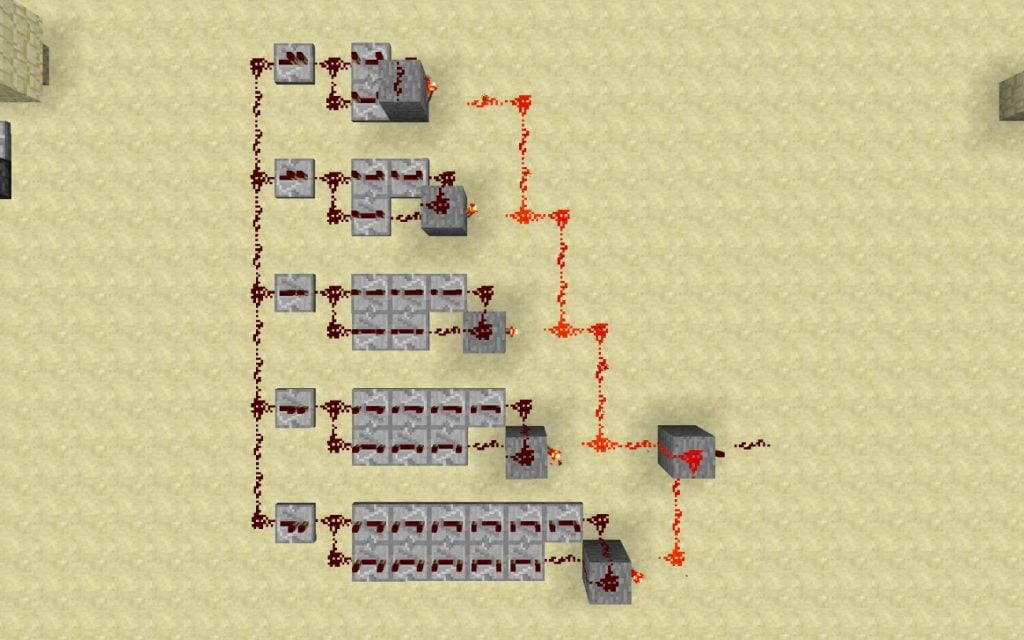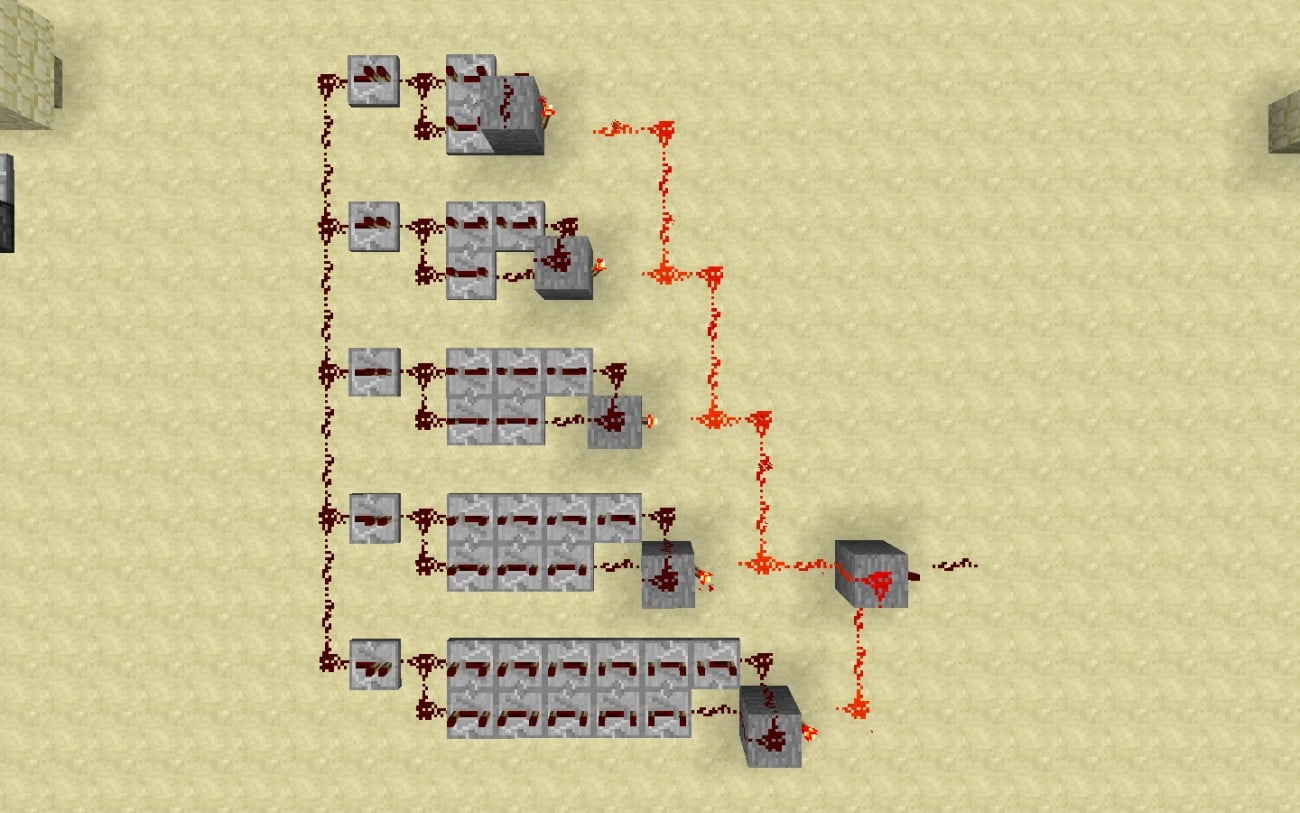This clock only emits a signal every 15 minutes.
Source: http://de.minecraftwiki.net/wiki/Redstone_%28Schaltkreise%29#Langzeit-Clock
As soon as you have started the clock on the left by a short redstone pulse, it emits a signal at the right end every 15 minutes 28 seconds.
Instructions:
The clock combines several clocks with different running times. Only if all clocks provide an ON signal at the same time, the long-term clock outputs a signal.The setup should be clear from the screenshot above. Most importantly, the number of amplifiers per clock should be prime, or not a multiple of another clock. So for example 2, 3, 5, 7, 11 amplifiers. Also, the signal at the input must not last too long or the clocks will stop working.
The running times of the clocks can easily be calculated by multiplying the number of amplifiers per clock and counting 0.4 times at the end, which gives the number in seconds (e.g. 2*3*5*7*11*0.4 = 920).
Here are a few run times along with the number of amps per clock:
- 2, 3: 2,4sec
- 2, 3, 5: 12sec
- 2, 3, 5, 7: 1min 24sec
- 2, 3, 5, 7, 11: 15min 28sec
- 2, 3, 5, 7, 11, 13: ~8h 20min
- 2, 3, 5, 7, 11, 13, 17: ~54h


 Long-term clock"/>
Long-term clock"/>


This does not work properly:-(
But 😛
But that takes a LONG time ^^
What do you mean, "clock left"? Left left. Sync and corrections by n17t01 No clock! Just say: "the smallest clock" or "the biggest".
I don't mean the clock on the left side, but when you have started the clock (that is the whole thing) "on the left side".
oh oh sooooo sorry...
Does not work for me somehow
have built it exactly so I put left a redstone flare take this away again a signal comes but after 15 min nothing more even when I built the small 2.4 sec nothing happens does anyone know why?
I rebuilt that.
It won't work for me.
15 min clock=awesome and useful for a clock
Is there also a "4-minute clock"?
Hi,
the idea to the clock is good, but has as you build it a crucial construction error, which is why it does not work with so many. Depending on the combination of prime numbers, it is sometimes not at all and sometimes strongly noticeable, it took me a long time to come up with it.
The fault lies in the connection of the output to the repeater rows.
If you name the rows R1 to R5 and number the repeaters in each row from the input onwards, you will see that only "unique" number combinations are created by the prime numbers in each complete run. The clock should then trigger at combination R1:2, R2:3, R3:5, R4:7, R5:11. However, this also requires the output to be connected to the last repeaters in the series. In your picture, the triggering combination is R1:1, R2:1, R3:2, R4:3, R5:5, which is reached earlier.
But the problem with the correct construction is that the output is now exactly on the input, which is why a signal would be output immediately when starting the clock. I have solved this, in which I disconnect the output at the start by a piston.
You can even set almost any time with this clock, as long as you don't want it to run constantly:
1) You choose a repeater combination that runs longer than the required time
2) You make an Excel spreadsheet where you write the respective repeater rows in the columns next to each other and then drag them down (column A: 1 2 1 2..., column B: 1 2 3 1 2 3..., column C: 1 2 3 4 5 1 2 3 4 5. This way you create all combinations that exist.
3) The required time/0.4 rounded to the nearest even number gives the table row in which the matching combination is written.
4) If you connect the output of the clock exactly to this repeater, you will get a signal at the desired time.
The only drawback: you have to reset the clock when triggering, otherwise the next count takes longer, because it now runs through once again to the last combination. Possibly you could compensate with another connection and has only in the first run an error, but would be some computing.
really cool that you managed to build a 15 min clock so small
Was the idea before the introduction of the funnels? Since then there is a much more elegant solution. But good is your idea anyway, because otherwise a long timer already very hard to find and even harder to invent one!